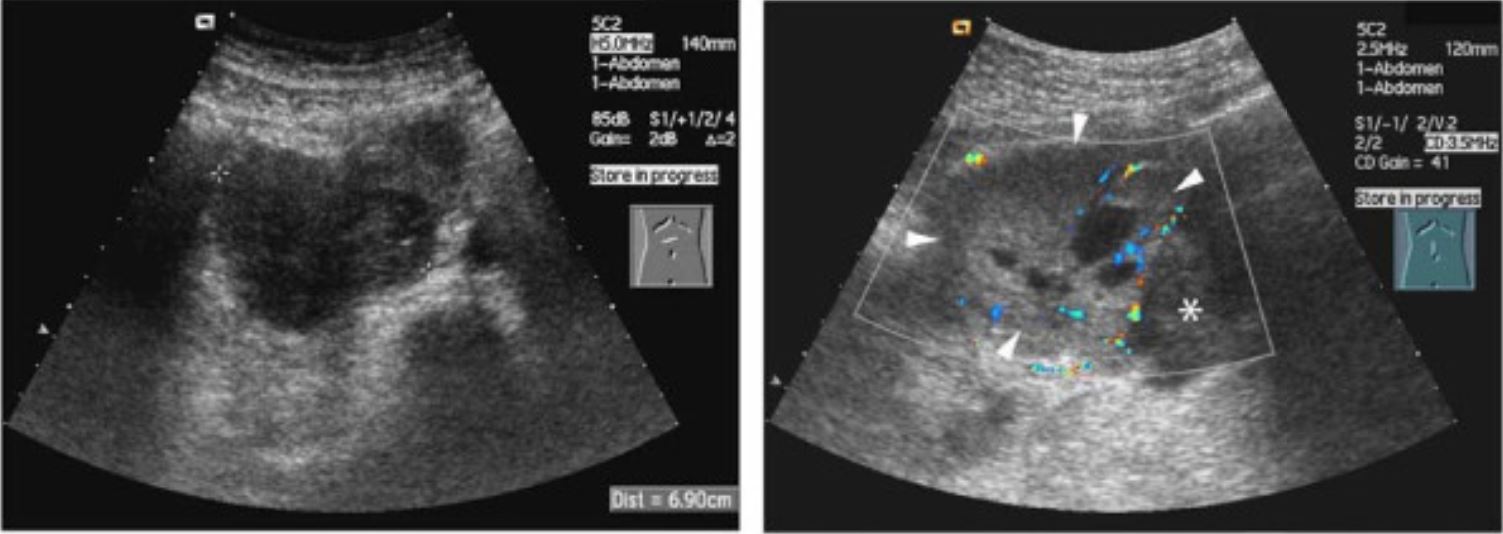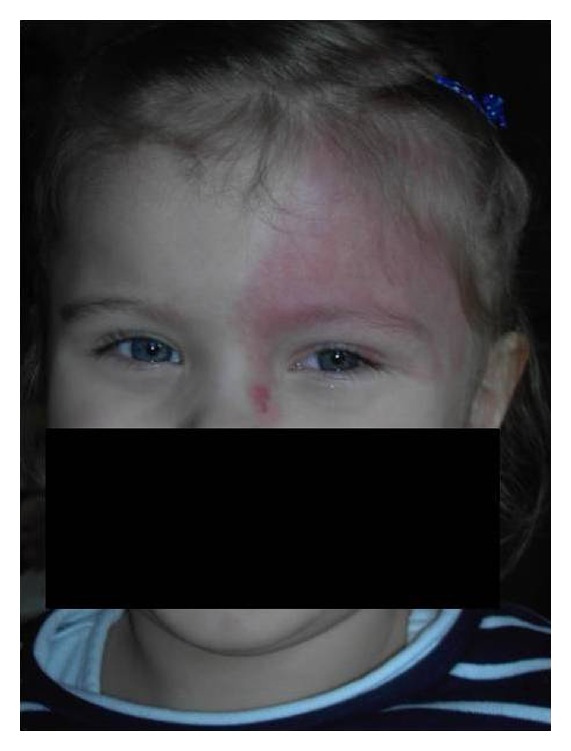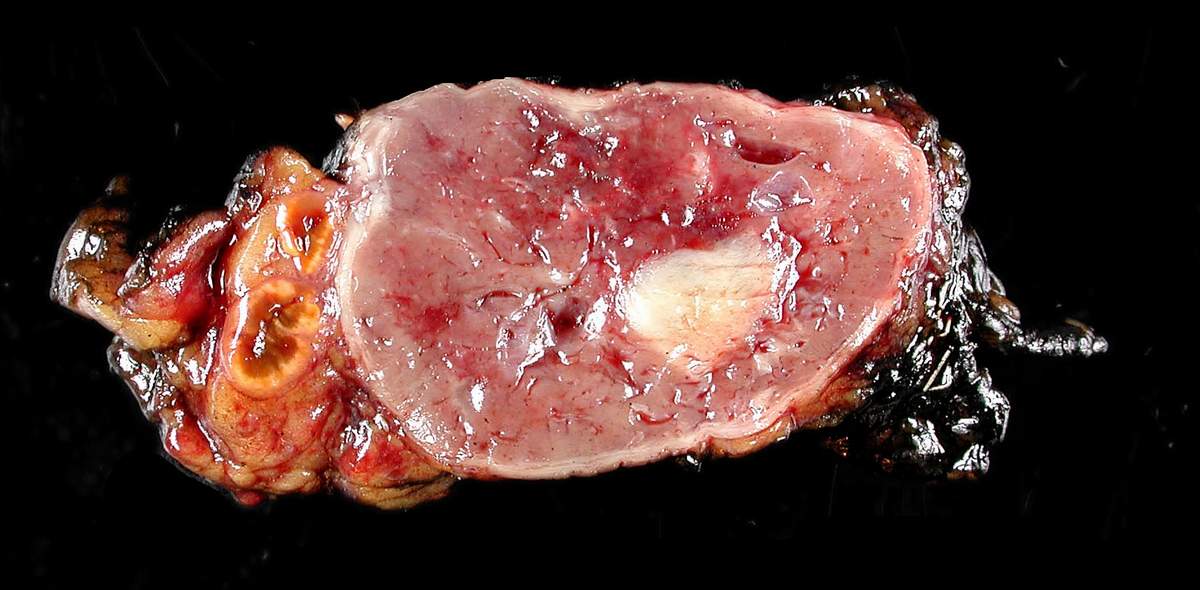Playlist
Show Playlist
Hide Playlist
Hereditary Disorders: Von-Hippel-Lindau Syndrome, Sturge-Weber-Syndrome, Neuroblastoma, MEN2A & MEN2B – Andrenal Medulla
-
Slides AdrenalMedulla EndocrinePathology.pdf
-
Download Lecture Overview
00:03 Hereditary Pheos, here is your Von Hippel-Lindau, angiomatosis, cerebellar hemangioblastomas, pheochromocytoma; renal cell carcinoma is huge. 00:15 The molecular mechanism for that is already discussed in great detail. 00:20 Once again, we talked about the hypoxia-inducible factor 1-alpha and its influence on VEGF and you can have the cyst in the kidney, in the liver, in the pancreas, all over the place. 00:36 In Sturge-Weber, cavernous hemangiomas of fifth cranial nerve, pheochromocytoma. 00:45 Sturge-Weber is a child, half the face might have your port wine stain. 00:52 What does that mean? Half the face looks reddened, erythematosus. 01:00 More hereditaries… these are neuroblastomas. 01:03 Malignant catecholamine producing tumour from the adrenal medulla association. 01:07 Remainder arise along the sympathetic chain. 01:11 Neuroblastoma… most common solid tumour in infants less than one year of age, causes hypertension. 01:21 The most important… the two most important points out of neuroblastoma - less than one year of age. 01:26 We’re thinking about solid tumour and number two, pheochromocytoma. 01:31 Look for episodic hypertension. 01:35 Often differentiated into more mature form called ganglioneuromas; amplification of N-myc… N neuroblastoma… this is bad. 01:48 You know about myc, myc especially your C-myc, here’s N-myc… neuroblastoma, we’re still continuing the topic of neuroblastoma. 01:58 Labs will show increased urinary excretion of your catecholamines in the form of metabolites. 02:04 Once again, we have our vanillylmandelic acid, the neuroblastomas that we’re seeing in the images to your right. 02:17 Continue our discussion of hereditary pheochromocytomas, here we have MEN part of both 2A and 2B. 02:25 We have more than one endocrine organ which we will walk through in great detail. 02:29 There is only 2A and 2B that we’ll take a look at with pheochromocytoma at this juncture. 02:36 Autosomal dominant 2A and 2B, familial medullar thyroid cancer could be found in 2A… medullary. 02:45 Genetic individuals here with 2A you want to keep in mind that RET proto-oncogene also associated… that’s the big point. 02:52 If you remember chromosome 10, that’s fantastic, you definitely want to know tyrosine kinase; the RET proto-oncogene is associated with the receptor tyrosine kinase. 03:03 What is MEN2A and what are these various organs that are involved? MEN stands for Multiple Endocrine Neoplasia and we have Sipple syndrome. 03:15 Medullary cancer of the thyroid, 100 percent of your patient is 2A will have medullary. 03:21 We will have medullary cancer of the thyroid in your 2B as well removed prophylactically, but before you can get in here and try to remove your patient, or excuse me, remove the nodule within the thyroid, you need to control this, right? Pheochromocytoma and you want to control the blood pressure maybe perhaps phenoxybenzamine before you do any type of surgery, don’t you ever forget that. 03:48 This is 2A so far medullary cancer of the thyroid, pheochromocytoma, what’s the third one? Hyperparathyroidism resulting in hypercalcemia. 03:59 Because of the medullary cancer of the thyroid, we’ll have RET proto-oncogene associated with tyrosine kinase… welcome to MEN2A… Sipple. 04:08 If this is 2A, let’s take a look at 2B. 04:13 Pheochromocytomas are also present here, hence our discussion. 04:17 Medullary cancer of the thyroid also here, cold nodule… what do you want to do first? First step of management, control the blood pressure. 04:27 Next step, my goodness, remove the tumour out of the thyroid, remove prophylactically. 04:33 Here, we’re seeing something different or unique that we did not see in 2A. 04:42 What is it? The mucosal neuroma or the continuation of a neuroblastoma called a ganglioneuroma. 04:50 We did not find this in 2A. 04:53 The above two, the medullary cancer of the thyroid and the pheo, both are present in 2A and 2B. 04:59 So, what do we not have in 2B? The hyperparathyroidism. 05:04 Clear? If it’s not, make sure it is before we move on. 05:07 95 percent of the time, it will be 2A; 5 percent of the time, it will be 2B. 05:12 Know both, be able to distinguish one from the other. 05:15 Marfanoid phenotype, take a look at your patient here… marfanoid, what does that mean? Tall, lanky, skinny… marfanoid. 05:25 Also, related to RET, medullary cancer of the thyroid, control your blood pressure.
About the Lecture
The lecture Hereditary Disorders: Von-Hippel-Lindau Syndrome, Sturge-Weber-Syndrome, Neuroblastoma, MEN2A & MEN2B – Andrenal Medulla by Carlo Raj, MD is from the course Adrenal Gland Disorders.
Included Quiz Questions
Which of the following is NOT associated with von Hippel-Lindau syndrome?
- Congenital adrenal insufficiency
- Pheochromocytoma
- Renal cell carcinoma
- Pancreatic cysts
- Cerebellar hemangioblastomas
Which is the most common solid tumor in infants under 1 year of age?
- Neuroblastoma
- Hemangioma
- Astrocytoma
- Glioma
- Pituitary adenoma
What hereditary disorder involves the RET proto-oncogene on chromosome 10?
- Multiple endocrine neoplasias (MEN) syndrome
- von Hippel-Lindau syndrome
- Neurofibromatosis
- Sturge-Webber syndrome
- Neuroblastoma
Which hereditary syndrome has a 100% instance of medullary carcinoma of the thyroid?
- Multiple endocrine neoplasias (MEN) syndrome 2A
- Multiple endocrine neoplasias (MEN) syndrome 1
- Multiple endocrine neoplasias (MEN) syndrome 2B
- Sturge-Webber syndrome
- von Hippel-Lindau syndrome
Customer reviews
5,0 of 5 stars
| 5 Stars |
|
5 |
| 4 Stars |
|
0 |
| 3 Stars |
|
0 |
| 2 Stars |
|
0 |
| 1 Star |
|
0 |







